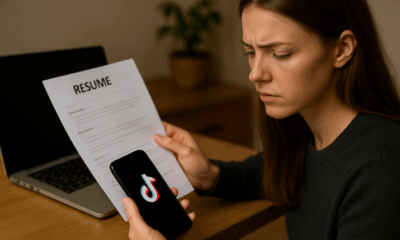Life
7 Juicing Tips From The Fat, Sick & Nearly Dead Creator

Why do I wake up at 5 am every Saturday? To interview people like Joe Cross. Six months ago I watched Joe Cross’s second documentary Fat, Sick & Nearly Dead 2 and the film again reaffirmed my reason for choosing to make my own juice every day. In part two of the interview I did with Joe, I wanted to focus on some of the juicing tips that you can learn from the famous documentary creator.
Joe is more than qualified to speak on success and has built his business “Reboot With Joe” in four years to be a globally recognised brand focused on juicing and changing your life. His company is now headquartered in New York and employs fourteen full-time staff that work to deliver his vision and expand the movement.
The community Joe has built online now see’s him with more than 240,000 member accounts, which is the largest online juicing community in the world. Not bad when you consider that he dropped out of high school when he was seventeen and never attended university.
He decided instead to become a courier boy until he discovered the Australian Futures Exchange and became a runner on the trading floor, and then a trader. From there he built a multi-million dollar business that he sold just before he made his first juicing documentary.
After my interview with Joe, I wanted to share with you seven juicing tips that he stands by which have now changed so many lives.
1. Know why you’re juicing first
What if success equalled your energy and your energy was determined by juicing? This was a question I asked myself and I am now very clear on the answer. Think about it carefully. If you are to be successful, you are going to have to form lots of good habits and work hard every single day.
I am sure you would agree that it is very difficult to work hard when you’re tired and have no energy. You, first of all, need to understand what having more energy will allow you to do and why you want to do that thing every day. Once you know your why, reframe juicing to be the enabler that will allow you to achieve success in the task you have chosen to be your life’s purpose.
One thing that was very clear when I was talking to Joe was that the reason he decided to start juicing is so he can fulfil his why of expanding his global movement and being a serial entrepreneur. He definitely doesn’t juice every day because it’s a nice thing to do; he does it because it gives him the energy he needs to fulfil his vision.
2. Cold press vs centrifugal juicing
Through the research I did before speaking with Joe I noticed that there wasn’t much content around which form of juicing was the best. Luckily, my question on which way was better to juice was missing the underlying issue; we don’t consume enough plant-based substances so any form of juicing is better than none at all.
In Joe’s opinion, there are minimal differences between cold press juicing, slow juicing and centrifugal juicing. One area that he says cold press juicing can be better for is extracting liquid from leafy greens, otherwise there isn’t a lot of difference and it comes down to horses for courses.
One of the concerns raised with centrifugal juicing is that critics say the process heats up the juice, but Joe says that if you look at the evidence, the juice only heats up by around one degree.
Think about it this way, the change in weather conditions between summer and winter doesn’t affect the nutrient value of vegetable produce and neither does less than one degree of heat from a juicer.
A lot of people talk about centrifugal juicers heating up the juice for a fraction of a second but no one really talks about blending and what that does to the produce for the sixty seconds it takes to blend a smoothie. There is a lot more damage done in a blended drink then there is in juicing and there are much larger amounts of heat produced during the process.
Joe truly believes that the myth of juice being heated up by a traditional centrifugal juicer is just marketing hype and not much else.
Having used both types of juicers myself, my personal experience has been that the cold press juicer extracts more juice and is better at juicing greens than centrifugal. This is important to me because the greens are the best form of produce you can consume. Everyone has their own opinion though so try what is best for you; you can’t go wrong either way.
3. Organic vs normal produce
To address the topic of whether to use organic produce or normal produce you need to understand the concept of the clean fifteen and the dirty dozen in relation to how much pesticide is found on different types of produce.
Below are the Environmental Working Group’s list of both categories and the fruits and vegetables that make up each type:
As you can see, some fruits and vegetables potentially contain more pesticide than others. If money is no option then go for 100% organic, otherwise, consider buying normal produce for everything on the clean fifteen list and buying organic for the items on the dirty dozen list.
The reason why Joe suggests not getting too bogged down in the details of juicing too much is that, as he describes it, he would rather you eat a non-organic, conventional apple that go out and eat a microwave pizza. Even though the apple is not a nutritious as it could be, it’s still 100 times better than eating processed food.
4. Consume plant-based food any way you can
There are three ways for us to consume our plants and doing one of these ways is better than doing none at all.
- Eat it with a knife and fork – (hands will do though and we have been doing that for longer than anything)
- Blend it – outsourcing the chewing to a machine
- Juice it – the best way for those who are time poor
Whether you blend something or eat it, it’s the same result on the body. When you juice the produce, you’re extracting out the micronutrients and the water from the plant, so juicing is effectively juicing water filtered through a plant.
There is a difference in terms of concentration and the amount of micronutrients you can consume. If Joe gave you ten sticks of celery and asked you to eat them all you would struggle whereas if he put ten sticks of celery through a juicer and added some pears, lemon and ginger, you could drink that in ten minutes.
“For an itch of celery it takes the average human around seventy bites to consume”
The difference between juicing and the other two ways of consuming vegetables is that the concentration and volume of micronutrients are much higher. Luckily in today’s world none of us are faced with one choice and we are fortunate enough to have three, and Joe believes that given that most of us are not consuming enough plant food, we need to utilise all three.
Doing so will give ourselves the opportunity to maximise our micronutrient intake. The other method of consumption is to use the left over pulp from your juicing in things like vegetarian burgers, homemade cinnamon rolls, soup recipes, flaxseed crackers, and the list goes on. A lot of people discard the pulp and don’t realise that it’s fibre and you shouldn’t necessarily discard it.
5. Create a Juicing routine
To be able to be successful at juicing and get all the benefits that come with it, you need to be like Joe and create a juicing routine.
When Joe’s at home he juices in the morning (7am-8am), he blends around mid morning (10 or 11 am), sometimes he will have egg, then salad with protein for lunch, another juice or smoothie in the afternoon (depending on whether he has been working out), and then a regular dinner at night.
The daily routine Joe has is a mixture of the three methods of consuming plant based produce and he aims to have his diet consist of 50% of calories coming from plants. This goal can be quite hard to achieve if you don’t have the right routine in place and if you’re attempting only to eat plant-based produce.
6. Have a juicing substitute while you’re overseas
If you’re someone who travels a lot then juicing at home is not really an option. Luckily, Joe is in the same boat so I asked him what he does. Joe said that he will often go to a juice bar and if he is not sure where one is, he will send out a tweet and get a recommendation from his followers.
Other than juice bars, Joe drinks HPP juice (high pressure processing) from brands like Evolution Fresh or his own “Reboot Your Life Juice” that was, up until recently, available in Woolworths stores here in Australia. .
One thing that fascinated me about Joe’s original documentary, Fat, Sick & Nearly Dead, was that he travelled around the USA with a juicer in the back of his car and made fresh juice on the road. I thought to myself that this wasn’t a very practical way for most people, and my hunch was right, Joe confirmed that the method was mostly done for the film and he doesn’t do this in his everyday life.
I asked him about how he washed the produce when he was on the road in the film and he said that the film crew would clean it in the RV, or sometimes with hoses, or sometimes they just didn’t wash the produce at all.
So if you’re lucky to have a crew follow you around everywhere you go then consider this method, otherwise stick with the bottled juice or going to a juice bar.
7. Staying motivated with juicing and life
To be able to stay motivated and maintain the habit of juicing you have to look at the things in your life that are really important.
There are lots of ways to measure your success:
- Your health
- The love in your life
- Your spiritual self
- Your family and friends
You will notice that if one of these areas of your life is significantly unsuccessful, then the habit of juicing and your diet may be affected. The key is to maintain each of these areas as best as you can because they are directly related to your ability to continue to juice and be healthy long term.
To stay motivated in life one of Joe’s tricks is to not take himself too seriously and to understand that his career and work is not everything. When things haven’t been going too well in Joe’s career, he has always focused on the things that are going well.
Like a true Sydneysider, one of the highlights of my time with Joe was when he taught me a lesson on life that comes from the world of yacht races. Here is that lesson:
“Things come in cycles and you are going to have times when things are tough and you are going to have times when the wind’s at your back. The trick is realising when the wind is behind you, and being aware the wind is behind you, and then enjoying the smooth sailing.
Be aware though that the wind can turn around and be against you at any time. When the wind is against you and you’re doing it tough, you have to weather the storm and just hang in there. Try not to make any stupid mistakes and don’t abandon the race. You just have to persevere. “
Joe shows in Fat, Sick & Nearly Dead 2 that life is not always smooth sailing and that even with all the positives changes he has had in his life he can sometimes go off track too. The key to Joe’s success has been to notice when he’s off course and refocus his attention back to what makes him motivated.
With a background in finance, Joe has been around long enough to know that from the 1987 crash, 2001 dot-com bubble, to the 2007-2008 financial crisis, there are times when the chips are going to be down, but you just have to be sure that you can persevere.
“You might have fear on the inside but you have to be careful not to show fear on the outside”
At the end of every interview, I always like to ask the interviewee what books have influenced them the most. Joe’s response was that he has never really been a big reader or student but what affected his personal development the most was his own trial and error, and personal experience.
That aside, the three books that Joe recommends the most are:
The Seven Spiritual Laws of Success – Deepak Chopra
Way of the Peaceful Warrior – Dan Millman
The Alchemist – Paulo Coelho
If you want more juicing and lifestyle tips from Joe Cross and his team then go to RebootWithJoe.com to find out more.
Life
9 Harsh Truths Every Young Man Must Face to Succeed in the Modern World
Before chasing success, every young man needs to face these 9 brutal realities shaping masculinity in the modern world.

Many young men today quietly battle depression, loneliness, and a sense of confusion about who they’re meant to be.
Some blame the lack of deep friendships or romantic relationships. Others feel lost in a digital world that often labels traditional masculinity as “toxic.”
But the truth is this: becoming a man in the modern age takes more than just surviving. It takes resilience, direction, and a willingness to grow even when no one’s watching.
Success doesn’t arrive by accident or luck. It’s built on discipline, sacrifice, and consistency.
Here are 9 harsh truths every young man should know if he wants to thrive, not just survive, in the digital age.
1. Never Use Your Illness as an Excuse
As Dr. Jordan B. Peterson often says, successful people don’t complain; they act.
Your illness, hardship, or struggle shouldn’t define your limits; it should define your motivation. Rest when you must, but always get back up and keep building your dreams. Motivation doesn’t appear magically. It comes after you take action.
Here are five key lessons I’ve learned from Dr. Peterson:
-
Learn to write clearly; clarity of thought makes you dangerous.
-
Read quality literature in your free time.
-
Nurture a strong relationship with your family.
-
Share your ideas publicly; your voice matters.
-
Become a “monster”, powerful, but disciplined enough to control it.
The best leaders and thinkers are grounded. They welcome criticism, adapt quickly, and keep moving forward no matter what.
2. You Can’t Please Everyone And That’s Okay
You don’t need a crowd of people to feel fulfilled. You need a few friends who genuinely accept you for who you are.
If your circle doesn’t bring out your best, it’s okay to walk away. Solitude can be a powerful teacher. It gives you space to understand what you truly want from life. Remember, successful men aren’t people-pleasers; they’re purpose-driven.
3. You Can Control the Process, Not the Outcome
Especially in creative work, writing, business, or content creation, you control effort, not results.
You might publish two articles a day, but you can’t dictate which one will go viral. Focus on mastery, not metrics. Many great writers toiled for years in obscurity before anyone noticed them. Rejection, criticism, and indifference are all part of the path.
The best creators focus on storytelling, not applause.
4. Rejection Is Never Personal
Rejection doesn’t mean you’re unworthy. It simply means your offer, idea, or timing didn’t align.
Every successful person has faced rejection repeatedly. What separates them is persistence and perspective. They see rejection as feedback, not failure. The faster you learn that truth, the faster you’ll grow.
5. Women Value Comfort and Security
Understanding women requires maturity and empathy.
Through books, lectures, and personal growth, I’ve learned that most women desire a man who is grounded, intelligent, confident, emotionally stable, and consistent. Some want humor, others intellect, but nearly all want to feel safe and supported.
Instead of chasing attention, work on self-improvement. Build competence and confidence, and the rest will follow naturally.
6. There’s No Such Thing as Failure, Only Lessons
A powerful lesson from Neuro-Linguistic Programming: failure only exists when you stop trying.
Every mistake brings data. Every setback builds wisdom. The most successful men aren’t fearless. They’ve simply learned to act despite fear.
Be proud of your scars. They’re proof you were brave enough to try.
7. Public Speaking Is an Art Form
Public speaking is one of the most valuable and underrated skills a man can master.
It’s not about perfection; it’s about connection. The best speakers tell stories, inspire confidence, and make people feel seen. They research deeply, speak honestly, and practice relentlessly.
If you can speak well, you can lead, sell, teach, and inspire. Start small, practice at work, in class, or even in front of a mirror, and watch your confidence skyrocket.
8. Teaching Is Leadership in Disguise
Great teachers are not just knowledgeable. They’re brave, compassionate, and disciplined.
Teaching forces you to articulate what you know, and in doing so, you master it at a deeper level. Whether you’re mentoring a peer, leading a team, or sharing insights online, teaching refines your purpose.
Lifelong learners become lifelong leaders.
9. Study Human Nature to Achieve Your Dreams
One of the toughest lessons to accept: most people are self-interested.
That’s not cynicism, it’s human nature. Understanding this helps you navigate relationships, business, and communication more effectively.
Everyone has a darker side, but successful people learn to channel theirs productively into discipline, creativity, and drive.
Psychology isn’t just theory; it’s a toolkit. Learn how people think, act, and decide, and you’ll know how to lead them, influence them, and even understand yourself better.
Final Thoughts
The digital age offers endless opportunities, but only to those who are willing to take responsibility, confront discomfort, and keep improving.
Becoming a man today means embracing the hard truths most avoid.
Because at the end of the day, success isn’t about luck. It’s about who you become when life tests you the most.
Change Your Mindset
The Four Types of Happiness: Which One Are You Living In?
Most people chase success only to find emptiness, this model reveals why true happiness lies somewhere else.

In a world driven by rapid technological growth and constant competition, many people unknowingly trade joy for achievement. (more…)
Change Your Mindset
The Secret Daily Routines Behind History’s Most Brilliant Thinkers
Uncover the daily rituals and hidden habits that powered history’s most brilliant minds to success.

Why Daily Rituals Matter
Every great achiever has one thing in common: discipline. Behind the novels, inventions, discoveries, and masterpieces are small, consistent habits repeated daily. (more…)
Finances
From Debt to Financial Independence: A Practical Roadmap Anyone Can Follow
It’s about having control over your money and not letting money control you.

The 21st century has brought incredible opportunities but also new challenges. Rapid technological change, global uncertainty, and shifting lifestyles have made many people think more deeply about financial freedom. (more…)
-

 Change Your Mindset4 weeks ago
Change Your Mindset4 weeks agoThe Secret Daily Routines Behind History’s Most Brilliant Thinkers
-

 Success Advice4 weeks ago
Success Advice4 weeks ago11 Mark Manson Lessons That’ll Redefine Success in the Digital Age
-

 Business3 weeks ago
Business3 weeks agoThinking of Buying A Business? These 6 Sectors Quietly Produce the Best Deals
-

 Change Your Mindset3 weeks ago
Change Your Mindset3 weeks agoThe Four Types of Happiness: Which One Are You Living In?
-

 Change Your Mindset2 weeks ago
Change Your Mindset2 weeks agoWork-Life Balance Isn’t a Myth: Here’s How to Actually Make It Happen
-

 Life2 weeks ago
Life2 weeks ago9 Harsh Truths Every Young Man Must Face to Succeed in the Modern World
-

 Success Advice1 week ago
Success Advice1 week agoInside the TikTok Resume Hack That’s Fooling Recruiters (For Now)
-

 Change Your Mindset5 days ago
Change Your Mindset5 days agoThe One Leadership Habit That Separates the Great From the Forgettable


























3 Comments